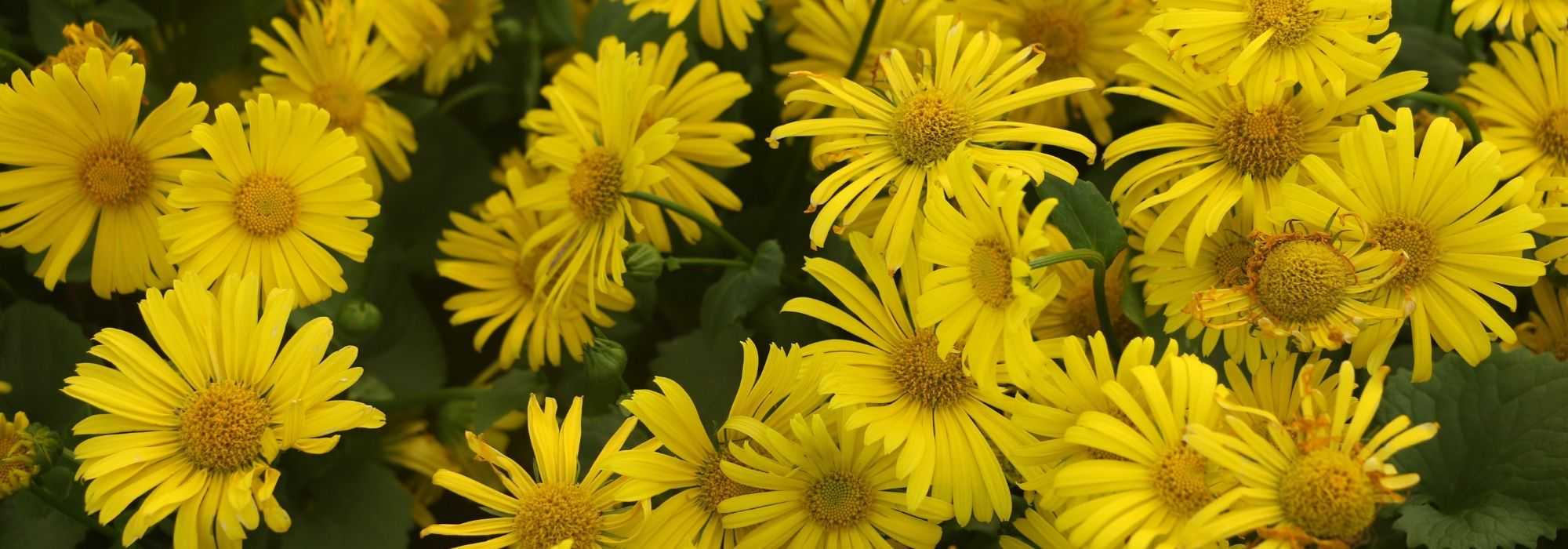
Doronic, Doronicum: planting, propagating and care
Contents
Doronicum, in a nutshell
- Doronics or Leopard’s banes symbolise first bursts of sunshine from March to April, with their daisy-like flowers of bright yellow.
- These flowers form beautiful tapeta, spreading slowly beneath bushes, on forest edges or cheerfully accompany the flowering of spring bulbs and forget-me-nots.
- Plant them in fairly cool but free-draining soil, in partial shade or in morning sun, in a spot that can be shaded during summer.
A word from our expert
Doronicums produce heads of great fineness, bright with a large orange-yellow centre crowned with fine golden-yellow ligules that sit above lustrous green foliage. Their flowering, which stretches from March to June depending on variety, lightens spring borders made up of large bulbs of tulips and daffodils. It pairs well with sky-blue forget-me-nots and enhances the orange brilliance of Iceland poppies.
Doronicum plantagineum is a robust deciduous perennial found from Portugal, Spain, France and Italy up to Great Britain, where it has naturalised. Its tuberous, creeping, pilous rootstock forms large colonies in prairies, heathland and forests. Its flower stems bear 1 to 3 heads in May–June then plant enters dormancy. It tolerates sun and shade provided soil remains cool. This species has produced the spectacular cultivar ‘Excelsum’ (syn. ‘Harpur Crewe’) which bears 10 cm heads. The other, more common species, Doronicum orientale (syn. caucasicum), has a distribution centred on south-east Europe: from Italy to Hungary, via Sicily, the Caucasus, Turkey and Lebanon. It is found in woods and thickets, on dry soil in summer, between 50 and 1900 m altitude in Turkey. This species is sensitive to excess moisture and humus which causes the stump to rot. It has yielded cultivars such as ‘Magnificum’ with large lemon-yellow flowers, ‘Little Leo’ or ‘Frühlingspracht’ with double flowers, ‘Finesse’ with very fine ligules, etc.
These perennials make excellent edging plants due to compact habit of their foliage and superb cut flowers thanks to their long peduncles, to brighten the home at end of winter.
Doronicum is a fairly recently introduced plant in our gardens, easy to grow, very hardy, at least down to −15 °C, but lifespan is sometimes short. It requires no special care but, if you bother to cut back faded flowers, it may reward you with a repeat flowering in autumn!
Description and botany
Botanical data
- Latin name Doronicum
- Family Asteraceae
- Common name Leopard's bane, Caucasian doronic, plantain doronic
- Flowering between March and June
- Height between 0.2 and 1 m
- Sun exposure sun or partial shade
- Soil type any loose soil, fresh to moderately dry, well drained
- Hardiness Excellent (-20 °C and below)
Genus Doronicum includes around 35 species of herbaceous perennials native to Eurasia as far as Siberia, where they occur in woods, thickets, meadows, heathland, scree and rocky debris up to 1900 m altitude in Turkey for species orientale (syn. Doronicum caucasicum). In gardens, most commonly cultivated are Caucasian doronic (Doronicum orientale) and Doronicum plantagineum, common in France, together with their varieties or hybrids.
These vigorous deciduous perennials have tuberous or stoloniferous roots with fleshy rootstock, brown outside and white inside, which spread slowly, eventually forming large colonies where conditions suit them. Basal leaves are heart-shaped or ovate, sometimes dentate and finely pubescent (notably in D. plantagineum), borne on a long petiole and gathered in tufts topped by tall, slender, cylindrical, pubescent and little or not ramified flowering stems, 20–100 cm high. These bear a few small sessile leaves, almost embracing. Foliage appears early in spring, quickly followed by flowers, and dies back with excessive summer heat or winter cold.
Inflorescences are solitary heads 2.5–5 cm in diameter, resembling yellow daisies, with very fine golden-yellow ligules, inserted in a single rank, surrounding a canary-yellow centre. Head sits on an involucre of bracts of equal length, imbricate in 2 or 3 ranks. Flowering extends from March to July in the wild but is rather in April for species orientale and in May–June for plantagineum. Flowering becomes more generous with time. Do not worry if foliage disappears during summer. Heat and drought often induce dormancy, notably in D. orientale, which produces new foliage in autumn and can sometimes rebloom if spent flowers are removed. Plant longevity is very variable, from very short to very long when situation suits it, i.e. a sunny position combined with well drained, rich and fresh soil.
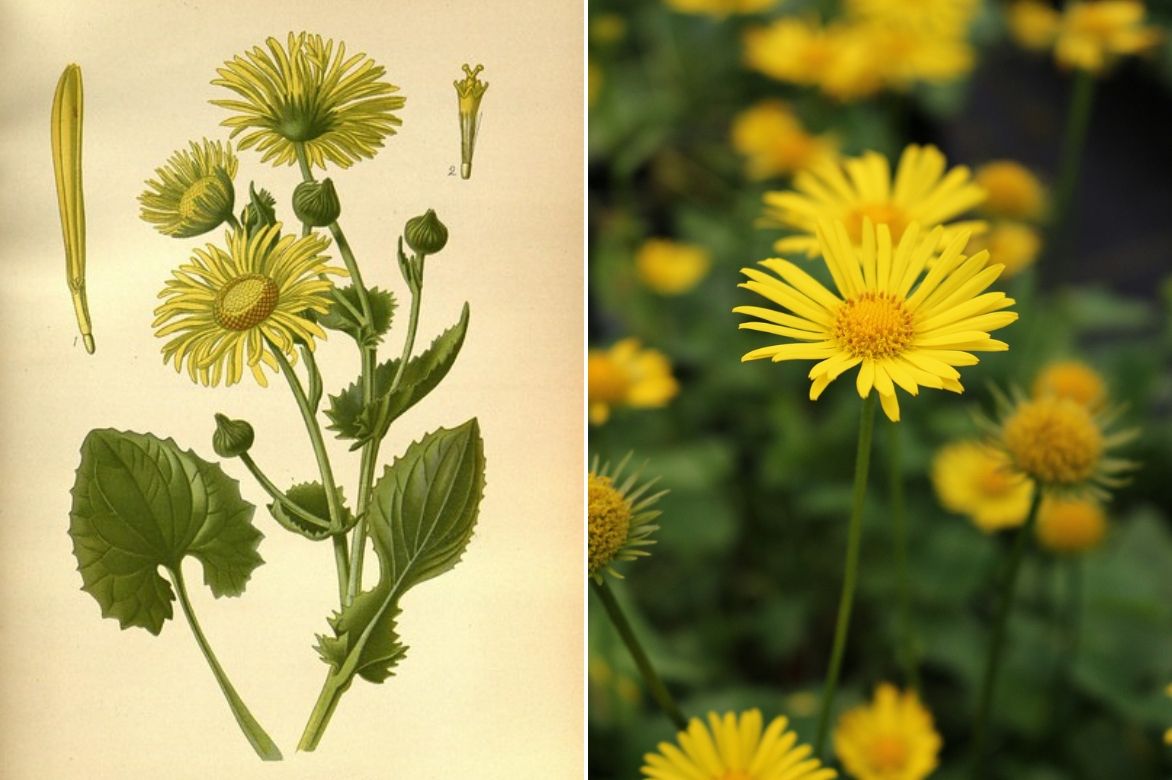
Doronicum orientale: botanical illustration and flowering
Fruits are achenes, oblong and cylindrical, villous and marked by deep furrows, of two types: central ones bear an egret of bristles while peripheral ones are naked, which helps distinguish Doronicum from genus Arnica that presents an egret on all achenes, which are otherwise less furrowed.
Main varieties of Doronicum
Varieties of the species Doronicum orientale
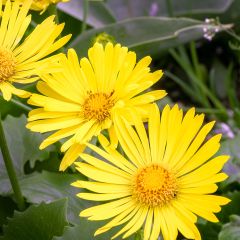
Doronicum orientale Little Leo
- Flowering time April to June
- Height at maturity 60 cm
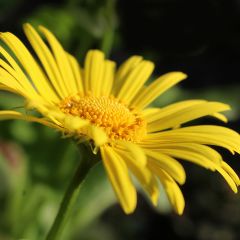
Doronicum orientale Magnificum
- Flowering time May, June
- Height at maturity 50 cm
Varieties of the species Doronicum plantagineum
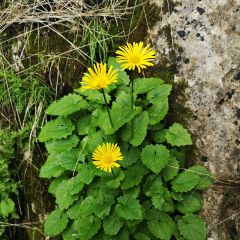
Doronicum plantagineum Excelsum
- Flowering time May, June
- Height at maturity 60 cm
Discover other Doronicum - Leopard's-bane
View all →Available in 1 sizes
Available in 1 sizes
Available in 1 sizes
Available in 1 sizes
Available in 1 sizes
Planting
Where to plant Doronic?
Plant Doronic in a sunny or semi-shaded position, in fresh, well-draining, preferably sandy-loam soil. It is rarely affected by parasitic pests; avoid planting in heavy, waterlogged soil where its stump could rot, particularly species orientale.
If soil is very sandy, add a handful of turf to retain some moisture.
When to plant?
Prefer autumn — September to November — to plant Doronics, or February–March.
How to plant?
This plant is easy to grow.
- Dip bucket into a pail of water to thoroughly moisten it.
- Dig a wide hole at least 3 times wider than the rootball because roots remain fairly superficial and spread widely.
- Add a few handfuls of sand and gravel to ensure good drainage around the roots. In heavy soil, choose planting on a raised mound or within a rockery.
- Apply a dose of horn meal if soil is sandy.
- Place the plant in the planting hole slightly burying the plant’s collar.
- Replace soil and firm down lightly.
- Water and mulch if climate is dry.
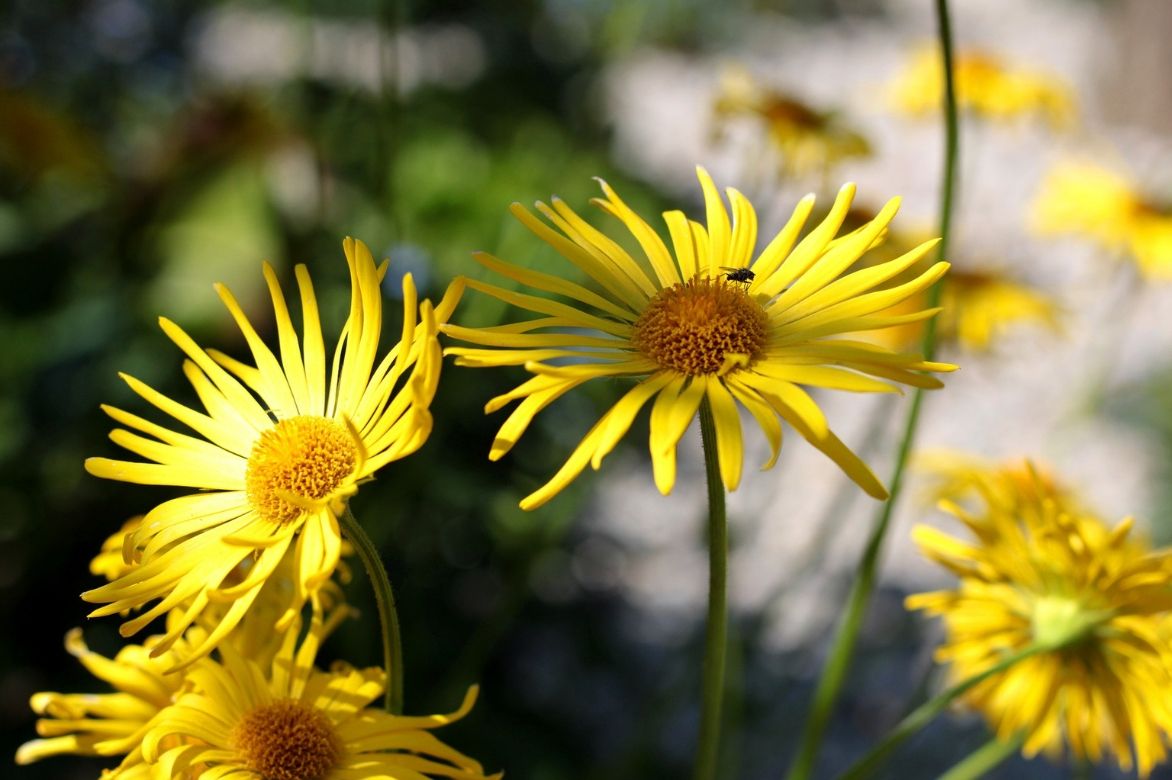
Care
- Water the soil from April if spring is dry.
- Remove faded flowers to avoid weakening the stump.
- Mulch the soil in summer to keep it cool.
- A rainy summer can favour downy mildew on the foliage. Remove infected leaves and, if necessary, spray with horsetail manure.
An excess of moisture in winter can rot the stump. Plant it in a rockery or add gravel to the bottom of the hole.
Multiplication
Simplest propagation method is to divide the clump in autumn or sow in spring.
Clump division
Separate clumps of leaves in autumn and replant them immediately in soil or in pots filled with potting compost mixed with sand.
Sowing
Sow under cold frame from February to April, using seeds harvested in summer.
Pot on as soon as seedlings can be handled and set out young plants in open ground the following autumn.
Uses and companion plants
With their wild look and robustness, doronics can form pretty tapeta in a leafy woodland understorey, their shoots still in bud when primroses, columbines, pulmonaries, lady’s mantles, wild garlic, daffodils and squills are coming into flower — a slightly wild mix that bees will love!
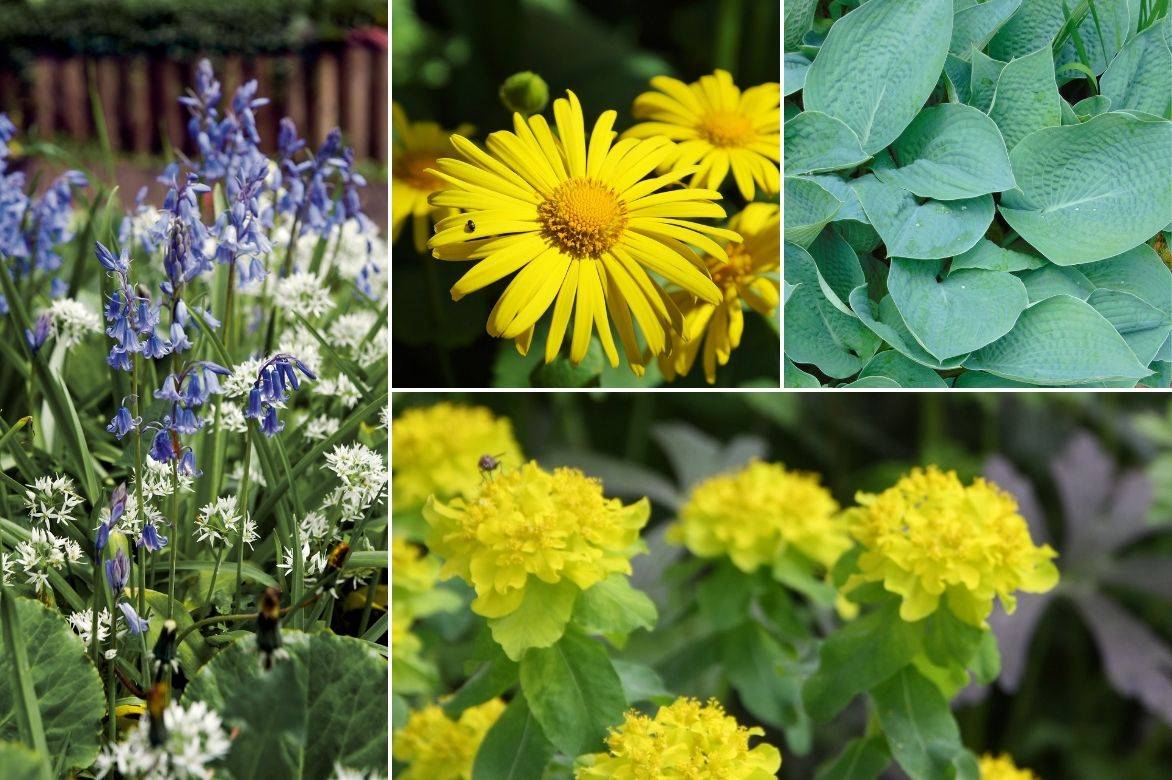
A fine example of an association in partial shade: Hyacinthoides hispanica and Allium ursinum, Doronicum (‘Little Leo’, ‘Magnificum’), Hosta sieboldiana var. elegans and Euphorbia polychroma
They are also used in borders or at the foot of spring bushes such as Japanese quince or deciduous Ceanothus, or planted in a rockery. They provide a light, luminous presence among spring bulbs such as tulips, mingling with the blue of forget-me-nots and the orange of Iceland poppies.
For a very graphic effect, plant a black tapetum of Ophiopogon niger with a few clumps of Doronicum and add one or more bulbs of the striking Fritillaria Persica Adiyaman. This combination will also work in a large colourful container because doronic does not fear being grown in urns and pots.
Feel free to pick its flowers as buds open to make brilliant spring bouquets.
Further information
Discover our range of Doronicum
- Subscribe!
- Contents

































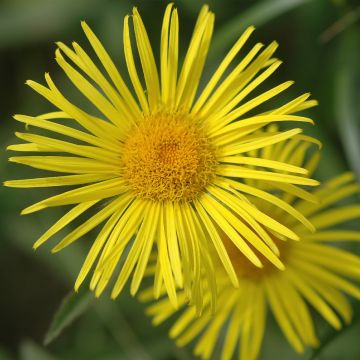


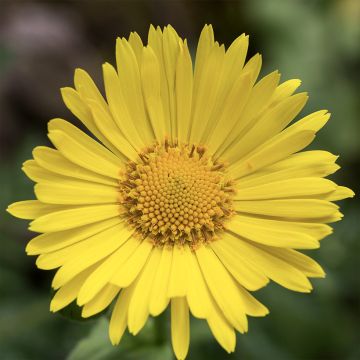
Comments